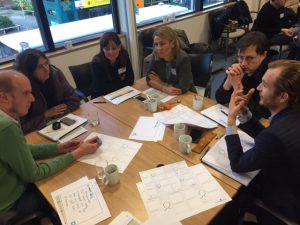Lessons learnt: Course design
Based on the implementation of 3 Pilot MOOCs, we present 19 (out 50) lessons learnt in the area of MOOC Course Design in this section:
- Platform choice and functionality are important considerations when developing a MOOC. Ensure that you assess the platform and that it meets your needs and has the functionality you need for the course.
- Not every course platform is applicable for each type of MOOC.
- Sign-up procedures should not be too complicated and long (e.g. only a few mandatory requirements such as name, e-mail and password plus some optional such as birth date, language, location etc.).
- Note that MOOCs are about massive numbers of learners participating in a course. Aligning with regional, national or even global platforms helps to cater to the needs and quality expectations of a (critical) business audience and potentially attract a lot of learners. This is an important consideration alongside the required functionalities of the platform.
- Accessibility of content and assets (such as videos) on different devices is important.
- Transcripts can be essential as many learners are not native English speakers, may not have good/reliable connectivity or prefer this format over video/audio. Build in time and resource to subtitle videos and ensure that text is in a screen reader compatible format.
- Design tools and well-approved didactical approaches (in our case Learning Design by the Open University UK and the e-Learning concepts by Gilly Salmon) facilitated the course production process well. See good practice for examples.
- Choice of topic and relevance for target group: A needs analysis with desk research about existing offers (MOOCs and other formats), with the targeted learners and qualified experts about the intended course topic, their expectations and how they would like to learn is critical.
- Familiarity with MOOCs varies among learners and should be considered both in terms of design and presentation of course content. Moreover, not all are self-directed learners.
- A diversity of activities is appreciated by learners (reading, watching videos, quizzes, forum discussions, etc.) and potentially deepens the learning process.
- Multimedia is appreciated by the learners (but only if high-quality in terms of content and technical features)
- Summaries of each module are appreciated, but only if they stick to the point and provide a good recap with minor new elements. This could be done at the end of each section.
- Completion rates are just one indicator for the success of a course, consider also other indicators such as the learners´ engagement with content, the quality of their contributions, their feedback, expert feedback and review, level of participation over the weeks, etc.
- In addition, become aware of your learner´s intention beforehand (e.g., by a pre-course survey) and contrast your success measurement with this (e.g. with learning analytics, with a corresponding post-course survey, with follow-up interviews)
- Multiple choice questions are not easy to design, especially for soft topics. Important to allow plenty of time to design meaningful quiz questions, run pre-tests and ensure you are developing your assessment in conjunction with your course Content
- Re-use of materials with open licenses works to some extent, but only when relevant and useful materials are carefully selected.
- MOOC closing events are a good opportunity for an informal reflection, but need to be planned and announced in advance (e.g. at the start of the course) with a description of what to expect, how the event will work etc.
- Outtakes from video production are not essential, but they add a more informal and personal touch to the online experience for the learners and the development team.
- Additional On-Site Exams are only taken by very few learners, but can be useful when the MOOC is part of University course/program and enables students to gain additional ECTS points.

